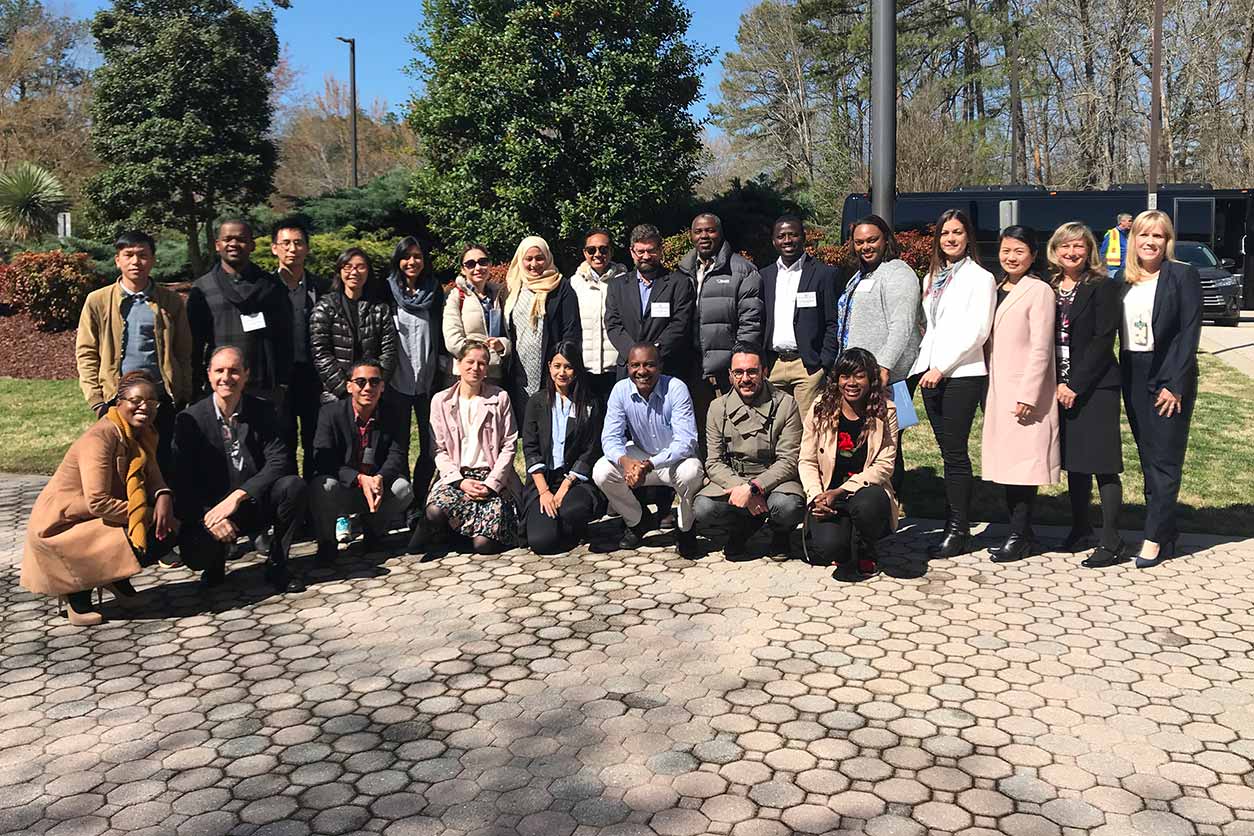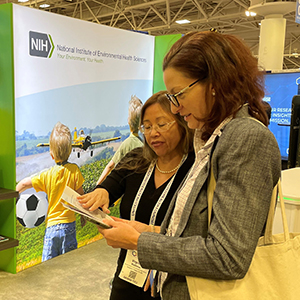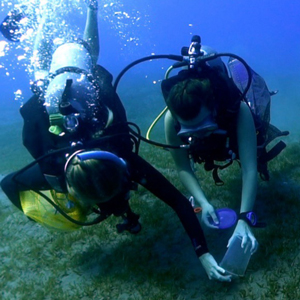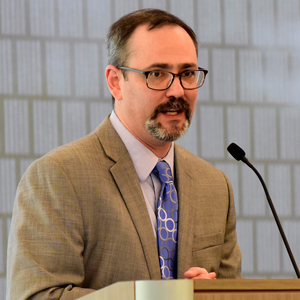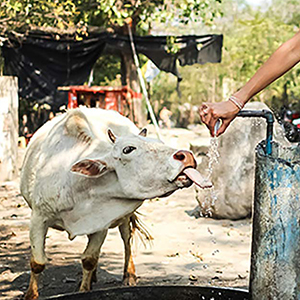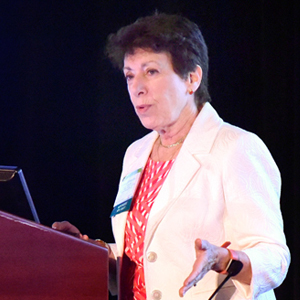A common interest in One Health drew an international group of 26 health officials to visit NIEHS April 3. They stopped at Research Triangle Park as part of their three-week tour of U.S. facilities. One Health emphasizes the connection between humans, animals, and the environment, with the goal of improving all health.
The trip was organized by the International Visitor Leadership Program (IVLP), the U.S. Department of State’s premier professional exchange program (see sidebar).
A warm welcome
NIEHS and National Toxicology Program Director Linda Birnbaum, Ph.D., and NIEHS Deputy Director Rick Woychik, Ph.D., described the institute’s extensive interest in and involvement with One Health.
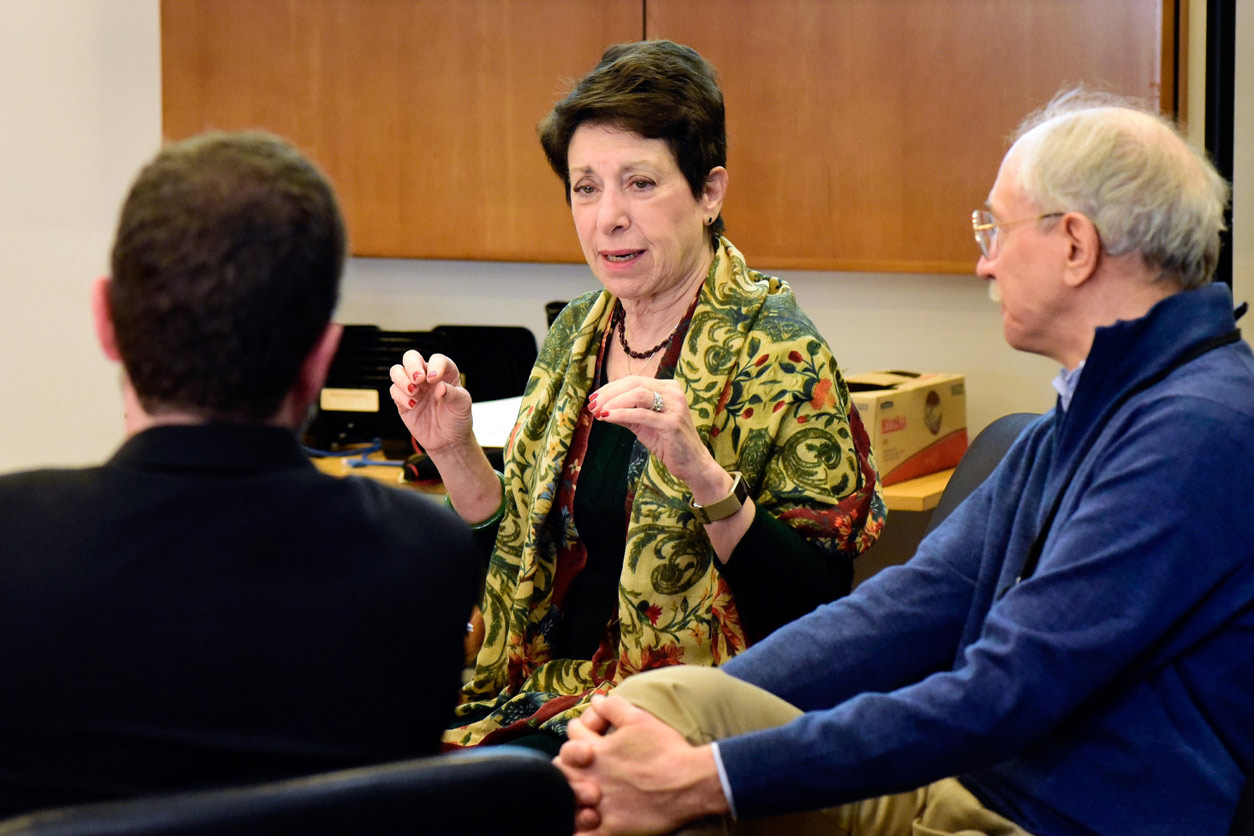 Birnbaum, center, and Woychik, right, expressed the significant NIEHS commitment to advancing One Health and global health initiatives. (Photo courtesy of Steve McCaw)
Birnbaum, center, and Woychik, right, expressed the significant NIEHS commitment to advancing One Health and global health initiatives. (Photo courtesy of Steve McCaw)“When we talk about One Health, we’re going all the way from the ecosystem level to the community level to the individual level, and then even to the microscopic level, and how they all interact,” said Birnbaum. Both leaders emphasized the importance of environmental health to One Health goals.
The visitors were greeted by event organizers and NIEHS One Health co-leads Heather Henry, Ph.D., and Kimberly Thigpen Tart, J.D., from the NIEHS Office of Policy, Planning, and Evaluation. They were joined by Trisha Castranio, from the NIEHS Global Environmental Health program.
 Wildlife veterinarian Zahidah Izzati Zeid, D.V.M., focuses on diseases that spread between animals and people, as well as emerging infectious diseases in Malaysia’s equatorial rainforest. (Photo courtesy of Steve McCaw)
Wildlife veterinarian Zahidah Izzati Zeid, D.V.M., focuses on diseases that spread between animals and people, as well as emerging infectious diseases in Malaysia’s equatorial rainforest. (Photo courtesy of Steve McCaw)NIEHS staffers shared details of relevant initiatives and programs.
- Kimberly Gray, Ph.D., described children’s environmental health and global health activities.
- Fred Tyson, Ph.D., discussed oceans and human health, harmful algal blooms, and more.
- Epidemiologist Richard Kwok, Ph.D., spoke about the GuLF study and other Epidemiology Branch studies.
- Jim Remington, from the NIEHS Worker Training Program, noted NIEHS worker training and disaster research response efforts.
Different approaches, one health
The IVLP participants clearly appreciated the opportunity to meet with like-minded scientists. “These kinds of meeting are very interesting, because we can have a whole picture and see the strategies or funding opportunities that we can be part of, and remain in touch with researchers from different agencies who have different approaches to One Health,” noted Alejandra Rojas Segovia, from the National University of Asuncion, Paraguay, where she researches dengue fever together with colleagues at Emory University.
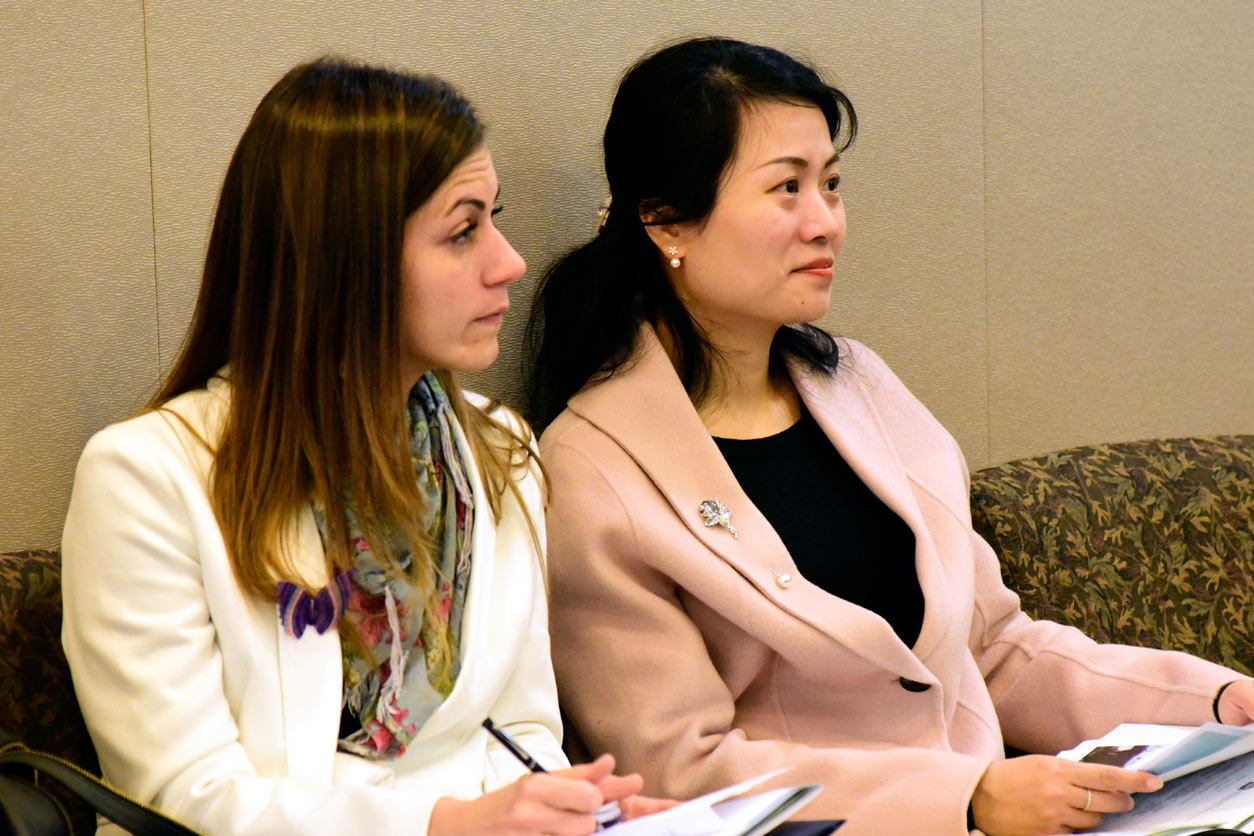 Segovia, left, took copious notes during the presentations, as did Haiming Luo, director of the World Health Organization Collaborating Center for Surveillance, Research and Training of Emerging Infectious Diseases in the People’s Republic of China. (Photo courtesy of Steve McCaw)
Segovia, left, took copious notes during the presentations, as did Haiming Luo, director of the World Health Organization Collaborating Center for Surveillance, Research and Training of Emerging Infectious Diseases in the People’s Republic of China. (Photo courtesy of Steve McCaw)“Now I realize that there are many more opportunities than I knew,” she added. “So this has been a great opportunity to meet people, build more collaborations, and grow capacities in our home countries.”
Henry also saw the session as a success. “The group was genuinely curious about the environmental health research questions we address at NIEHS, such as training workers for dealing with disasters, protecting drinking water resources from environmental contamination, and identifying early signs of harmful algal blooms,” Henry said. “Several of them indicated that they grapple with the same issues in their jobs at home.”
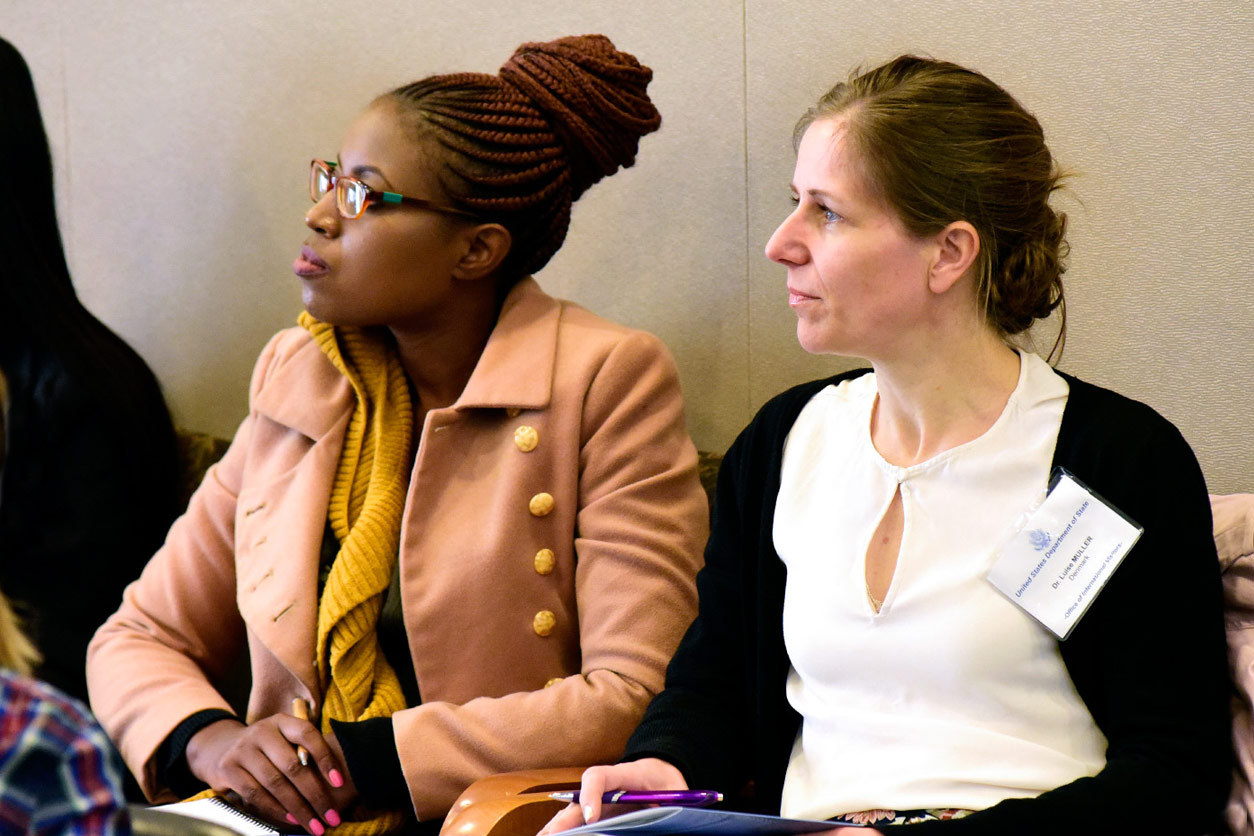 Isabella Ayagah, left, from the Kenya Ministry of Health, and Danish epidemiologist Luise Muller listened closely to the presentations. (Photo courtesy of Steve McCaw)
Isabella Ayagah, left, from the Kenya Ministry of Health, and Danish epidemiologist Luise Muller listened closely to the presentations. (Photo courtesy of Steve McCaw)The visitors appreciated receiving informational materials and links to online resources, which will become lasting resources in their own programs.
“I’d love to follow up to see how some of these programs and activities can be rolled out in my country in West Africa, Sierra Leone,” said James Bangura, a technical consultant with Metabiota, Inc. and formerly involved with Ebola response.
(Ernie Hood is a contract writer for the NIEHS Office of Communications and Public Liaison)
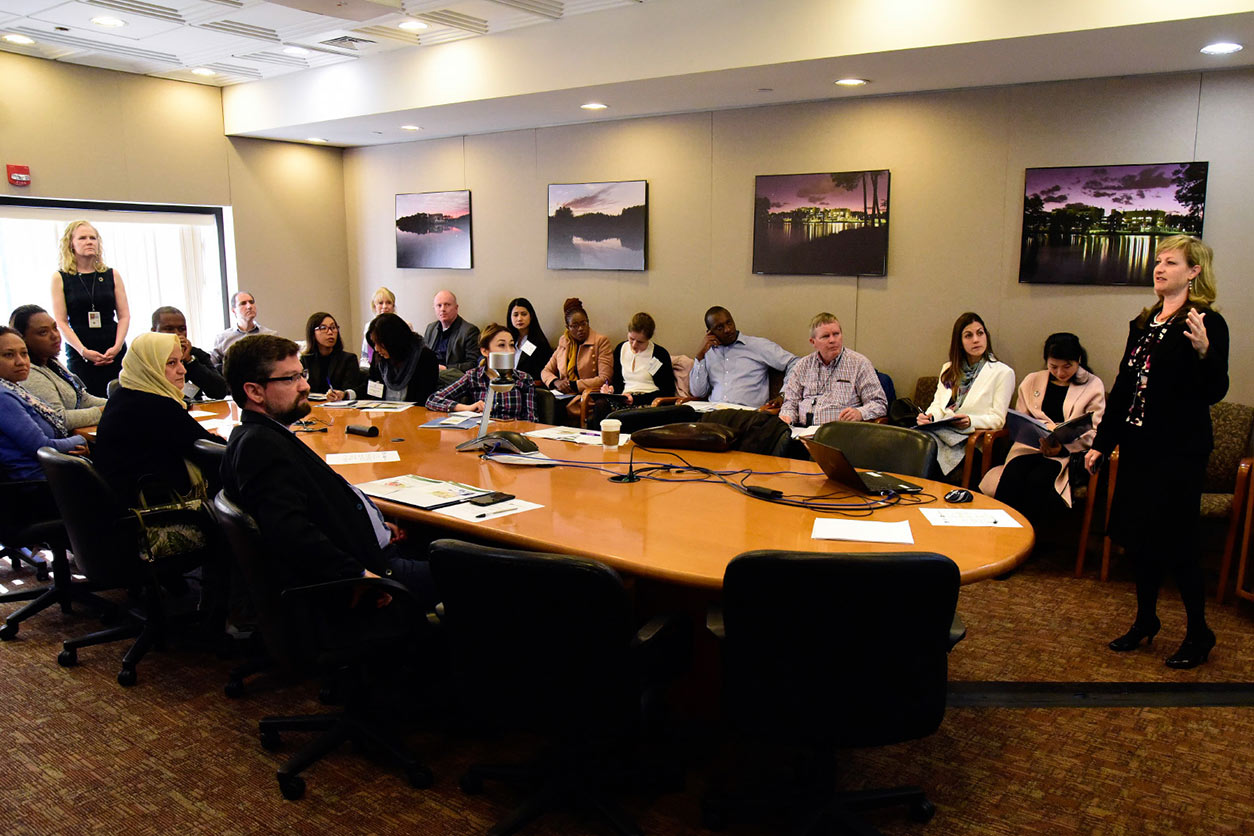
Henry, right, addressed the visitors to NIEHS.





